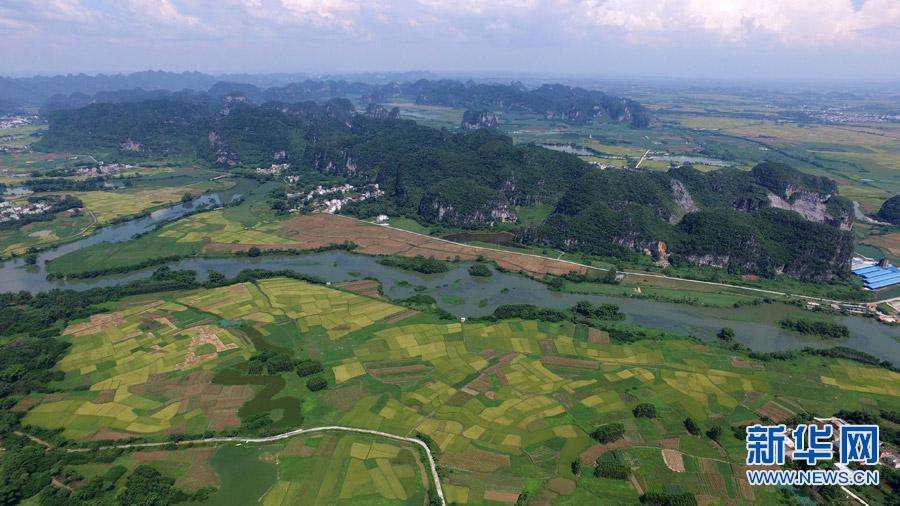


China, as one of the charter members of the United Nations, has been keeping its promises to uphold environmental protection since the first global commitment in 1972. Over 40 years gone by since then but the nation’s promises remain as solid as ever.
The world’s first document to explicitly recognize the right to a healthy environment was adopted by the United Nations in 1972. The next year, China held its first-ever national meeting on environmental protection and the nation’s first document on environmental protection was adopted.
Starting in 1978, the year when China’s reform and opening-up policy was implemented, the concept of environmental protection and pollution prevention and control was written into the country’s constitution.
In 1983, environmental protection became a basic national policy. Since then, China has spared no efforts in all of the country’s five-year development plans, as the nation strode on with its economic development.
By 2016, total investment in pollution control topped 922 billion yuan ($135 billion), nearly seven times of that in 2001, and investment in landscaping in 2016 totaled 217.1 billion yuan, some 11 times of that in 2001.
To tackle the water and air pollution that has become more prominent in recent years, China issued two specific action plans in 2012 and 2013, respectively, both of which have yielded improving signs.
Specifically, on air pollution, a series of measures were enacted to cut carbon emissions, including an even-odd license plate policy to reduce the number of private cars on the road. On Jan. 4, China issued a new document to crack down on low-grade fuel by targeting diesel trucks and shipping.
Diesel trucks, non-road diesel engines, and shipping contribute to some two-thirds of nitrogen oxide and particulate matter emissions in China’s transportation sector, experts noted.
The Chinese government has responded with a new plan to systemically oversee the more significant mobile pollution sources. The plan will play a crucial role in transitioning China’s transportation sector into a clean and low-carbon future, according to Gong Huiming, Director of the Transportation Program with Energy Foundation China.
From the nation’s first forestry resources study (1973-1976) and the eight others from 2009 to 2013, China’s forestry coverage has increased to 208 million hectare, with a total coverage rate of 21.63 percent, up 8.93 percentage points.
By 2016, the nation had registered 2,750 natural reserves, with a total area of 147.3 million hectare. Compared with the year 2000, some 1,523 reserves were added and total area increased by 50 percent.
Addressing the gathering on December 18, 2018, to celebrate the 40th anniversary of reform and opening-up, President Xi Jinping once again called on the nation to strengthen the construction of an ecological civilization, firmly establish the conviction that lucid waters and lush mountains are invaluable assets, and form a green development mode and lifestyle.
 Fire brigade in Shanghai holds group wedding
Fire brigade in Shanghai holds group wedding Tourists enjoy ice sculptures in Datan Town, north China
Tourists enjoy ice sculptures in Datan Town, north China Sunset scenery of Dayan Pagoda in Xi'an
Sunset scenery of Dayan Pagoda in Xi'an Tourists have fun at scenic spot in Nanlong Town, NW China
Tourists have fun at scenic spot in Nanlong Town, NW China Harbin attracts tourists by making best use of ice in winter
Harbin attracts tourists by making best use of ice in winter In pics: FIS Alpine Ski Women's World Cup Slalom
In pics: FIS Alpine Ski Women's World Cup Slalom Black-necked cranes rest at reservoir in Lhunzhub County, Lhasa
Black-necked cranes rest at reservoir in Lhunzhub County, Lhasa China's FAST telescope will be available to foreign scientists in April
China's FAST telescope will be available to foreign scientists in April "She power" plays indispensable role in poverty alleviation
"She power" plays indispensable role in poverty alleviation Top 10 world news events of People's Daily in 2020
Top 10 world news events of People's Daily in 2020 Top 10 China news events of People's Daily in 2020
Top 10 China news events of People's Daily in 2020 Top 10 media buzzwords of 2020
Top 10 media buzzwords of 2020 Year-ender:10 major tourism stories of 2020
Year-ender:10 major tourism stories of 2020 No interference in Venezuelan issues
No interference in Venezuelan issues
 Biz prepares for trade spat
Biz prepares for trade spat
 Broadcasting Continent
Broadcasting Continent Australia wins Chinese CEOs as US loses
Australia wins Chinese CEOs as US loses